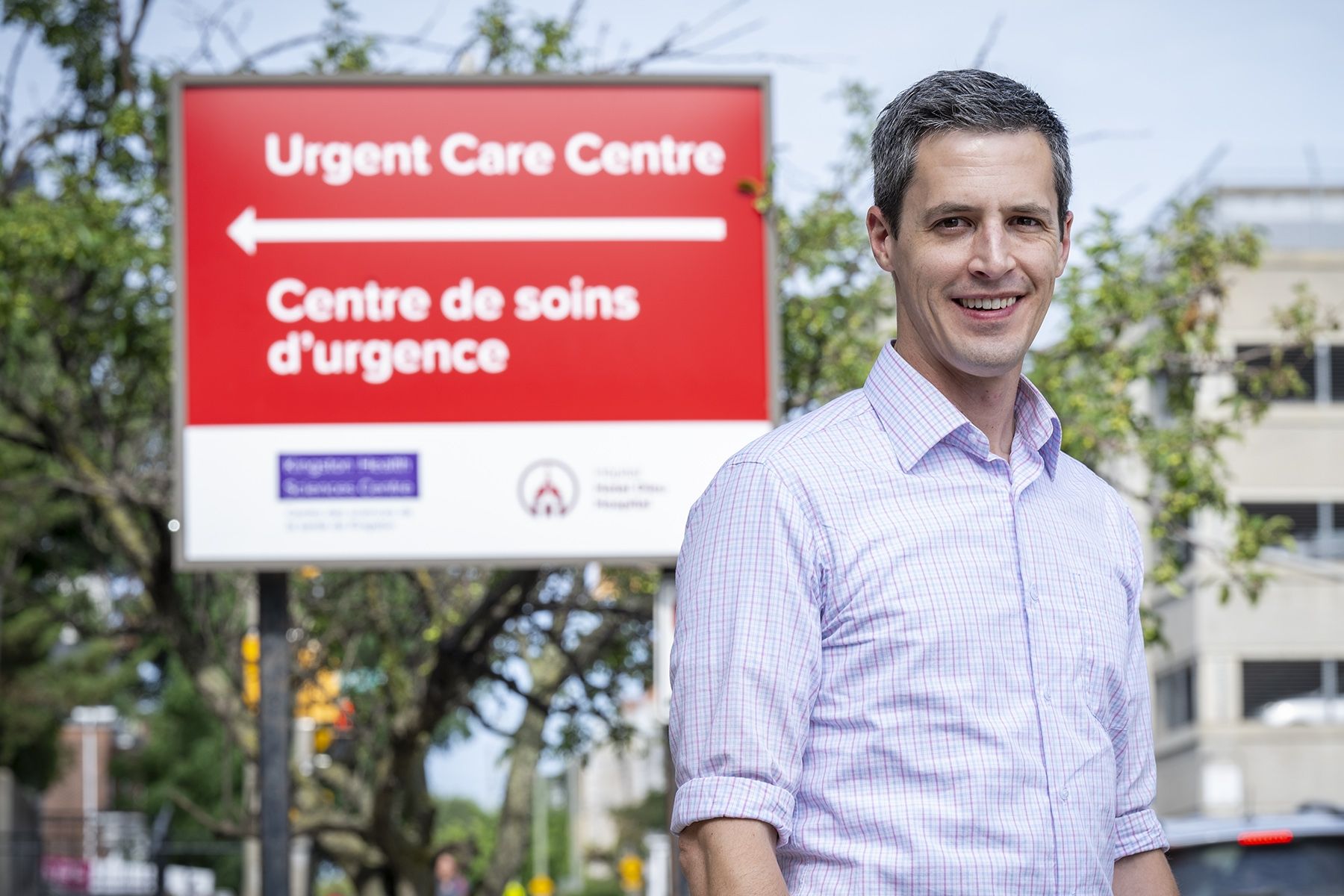Effective immediately masking is required for everyone when present on all inpatient units, in the Emergency Department (ED), the Urgent Care Centre (UCC), and the Children’s Outpatient Centre (COPC).

A recent study led by researchers at Kingston Health Sciences Centre (KHSC), the Kingston General Health Research Institute (KGHRI), and Queen's University, has identified several critical factors contributing to the escalating demand for pediatric urgent care in southeastern Ontario, particularly in Kingston. This research provides helpful guidance to those working to address current health system pressures.
Supported by the Southeastern Ontario Academic Medical Organization, this research has been published in the PLOS Digital Health journal, offering insights into the factors driving this trend.
The research, led by Dr. Daniel Mulder, a pediatrician at KHSC and assistant professor at Queen’s, sought to better understand the factors behind the recent increased demand for pediatric urgent care in the Kingston area. The study used comprehensive urgent care data from KHSC’s Children’s Outpatient Clinic (COPC), located at KHSC’s Hotel Dieu Hospital site, tracking pediatric urgent care visits from 2006 to 2022.
Key Findings:
- Significant increase in urgent care visits: This study recorded 164,660 unique visits to the pediatric urgent care centre over the study period. A marked increase in both the number and duration of visits was observed in the mid 2010’s with an acceleration in 2021/2022. The increased visits, combined with the increased lengths of stay, have had a compounding effect on urgent care teams.
- Decreased access to primary care: By 2022, the proportion of pediatric patients without primary care was 2.5 times higher than in 2013, resulting in more families seeking care through hospital services rather than community-based providers (i.e. family physician’s office).
- Increased patient complexity: The study highlighted an increase in the complexity of patient needs, leading to more frequent visits and longer stays in urgent care.
- Increase in infectious illnesses: The data revealed a rise in urgent care visits for infectious illnesses, not just COVID-19 but also RSV, influenza, and respiratory illnesses compared to previous years.
Dr. Mulder emphasizes the study’s significance in understanding the multifaceted challenges facing not just pediatric urgent care providers, but also those working to address current health system pressures.
"In recent years, the COPC has seen a notable increase in activity. While we had some initial theories, the study has given us a clearer picture of what’s driving the demand. We’re seeing more patients with infectious diseases, longer visit durations, and an increasing number of children without primary care access. In the past, about 1 in 20 pediatric patients did not have access to primary care and that has increased to about 1 in 13 in 2022,” says Dr. Mulder.
“This study highlights an important issue for system planners. We already know that proactively dealing with children’s health is more effective and costs less than having to treat chronic health issues later in life. While our hospital has ramped up services in the COPC, it doesn’t bring the same value as accessible primary care.”
It’s estimated that at least 20,000 people in the Frontenac, Lennox and Addington region do not have a primary care provider, a critical issue that has become a strategic focus for the Frontenac, Lennox and Addington Ontario Health Team (FLAOHT), of which KHSC is a founding partner.
"Ensuring everyone, from children to adults, has access to primary care is essential for the health of our community,” says Dr. Kim Morrison, Executive Lead of the FLAOHT. "The findings from this study underscore the urgent need for a more integrated, team-based primary care system that provides comprehensive care throughout a person's life. Our commitment through innovative partnerships, is to transform how care is coordinated across health, social and wellness services in our community. As we work towards attaching everyone to Health Homes, we aim to reduce the strain on urgent care services and improve overall health and wellness outcomes."
Similarly, investments such as that in the new primary care clinic in Kingston, which will service up to 8,000 people in the region, are an important step in addressing this pediatric care gap.
While this study focused on data from Kingston, Dr. Mulder and his research team believe similar trends are emerging in communities across the country. They plan to expand their research to include Ontario and Canada-wide data in the future.
Click here to read study in the PLOS Digital Health Journal.



